Tool Spotlight: Third Hand Soldering Jigs
26th April 2022When doing soldering jobs, there are many ways to hold your work pieces. Some repairers prefer to use individual spring loaded clips and a vice; some jobs may call for binding wire to be used. Usually the shape of the piece will inform the best way to position the joint, but one of the most flexible solutions is a third hand clamp or two. In this blog we introduce and demonstrate two new soldering jigs…
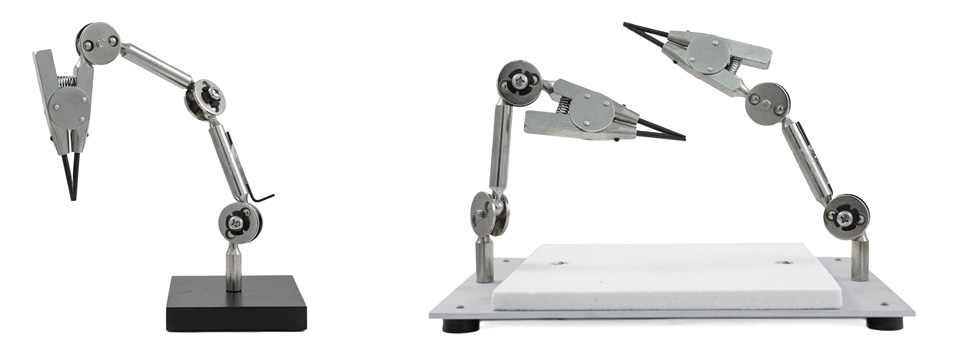
Older Style Soldering Jigs
Many Repairers made their own third hand clamps as part of their training or out of pure necessity in their first years of professional repair. Many of these are designed with parallel jaws and a two screw adjuster. The idea is that the jaws will get a nice grip on the side of key arms or key bridges, and once you’ve gotten the jaws parallel to the workpiece you tighten the back screw slightly to grip at the front.
It is a slightly fiddly adjustment to get right and can make it hard to grip items that are odd shapes. We’ve had a set of third hand clamps in the workshop for many years, jokingly called ‘The Unhelpful Hands’ as they’re so fiddly to get in the right position.
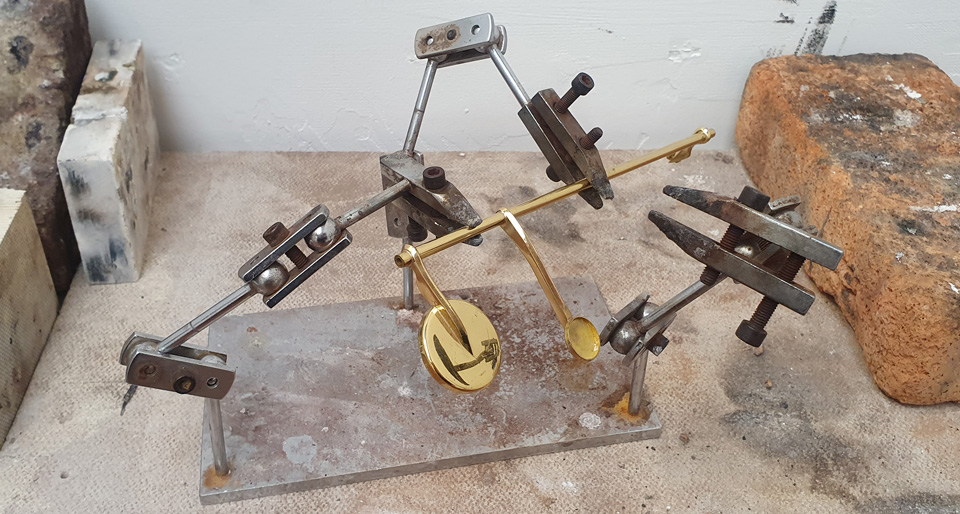
My Original Soldering Jigs – Made at College!
I made my own soldering jig (pic below) when studying in college and it shows my inexperience how large I made the jaws, making them overly heavy and hard to adjust. This parallel jaw and two screw set up is also what you’d usually see coming from suppliers and is therefore often what repairers have copied when making their own tools as well.
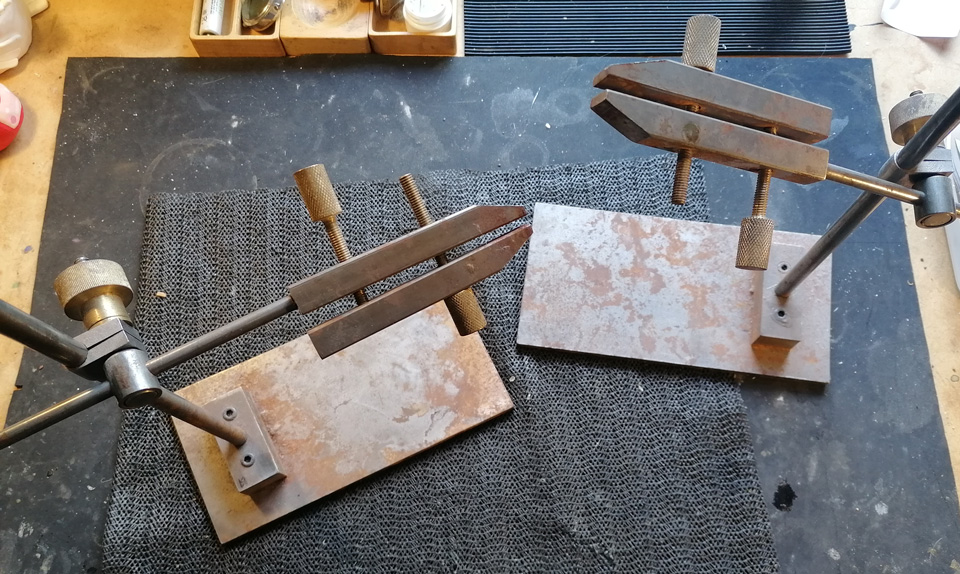
New & Improved Soldering Jigs
Let me introduce you to the third hand soldering jigs from Allied. The first thing to mention is that these jaws are spring loaded. Previously I have found myself shying away from using third hand jigs, as the time it takes adjusting the jaws can often be saved by some combination of clips and wire. Or simply a pair of well insulated pliers. However, with spring loaded jaws it’s as quick as half a second to grip a piece.
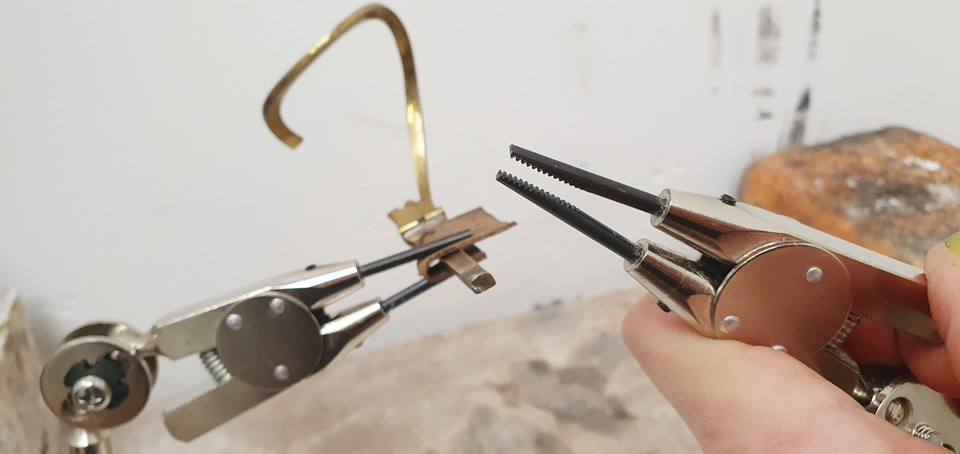
The jaws come with a narrow serrated steel jaw, but these can easily be changed with use of an allen key. This is another thing that speaks in the jigs’ favour; You can make your own jaws, filing them smooth from round brass stock, or even make new steel jaws by forging some round stock and hammer them flat or angling them to suit any job. Even with use of the original jaws you can pad them for more delicate jobs using tech cork as shown in this photo.
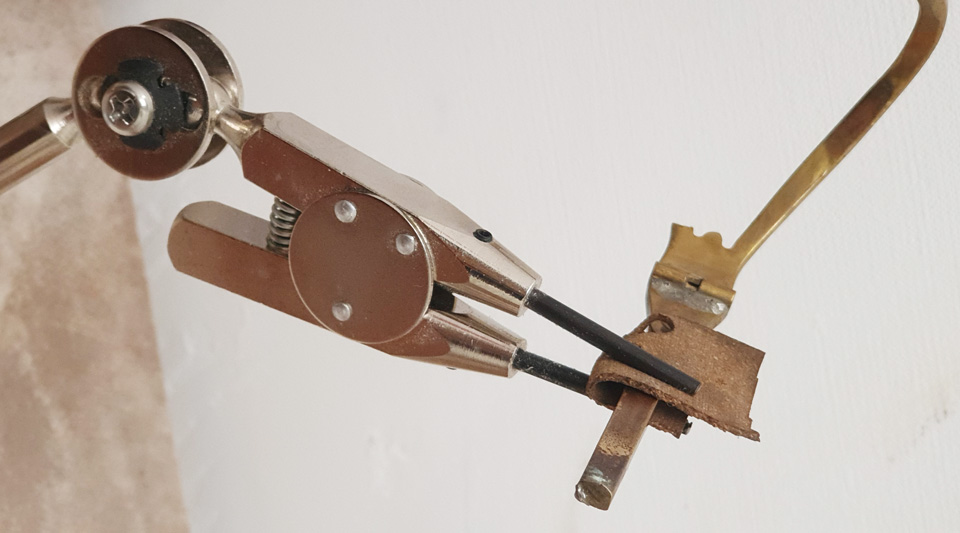
The joints of these are also improved by a simple ball and disk design that can be tightened or slacked off with just one screw. Ideally you want to find that sweet spot where you can move the jig freely but when you let go it stays in that position without having to tighten any screws. From the one we have tested I can say it does it out of the box.
Two Options Available
There are two new options to choose from: The two handed/double arm jig has two joints for adjustment, and the one handed/one arm jig has three. Combined they make a comprehensive and versatile soldering set up that has made me change my mind on third hand soldering jigs all together.
